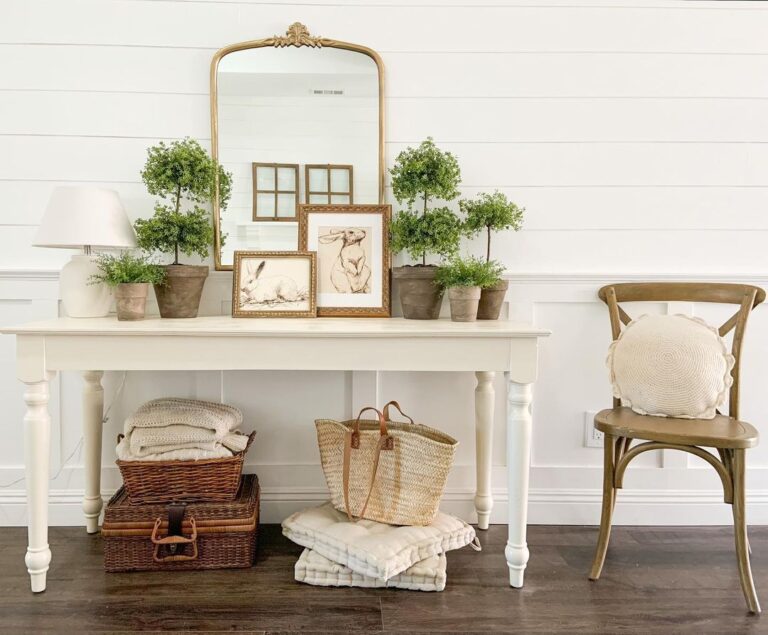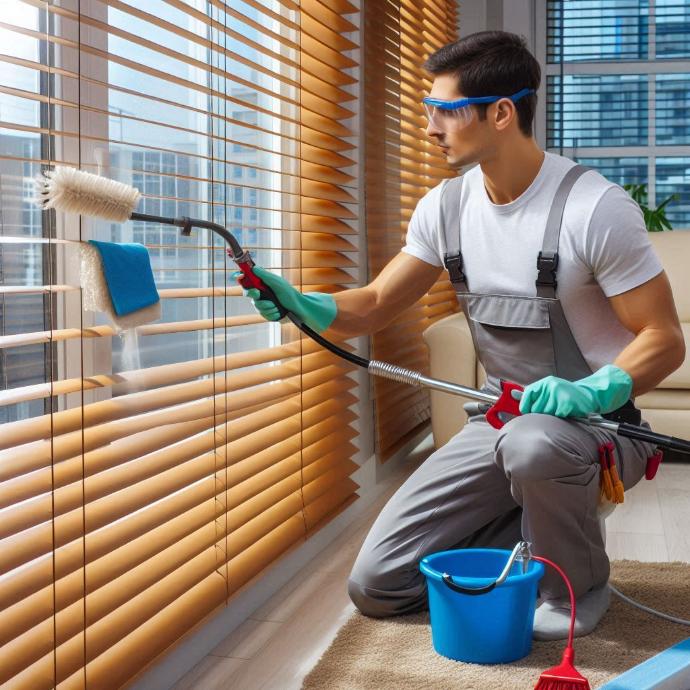As Jane looked out her living room window, she noticed that her once sleek, white blinds had dulled with time. They had quietly collected layers of dust, grime, and even traces of pet dander that she’d overlooked in her weekly cleaning routine. As sunlight poured through the slats, the dust became all too apparent, and Jane realized it was time to tackle the task she’d been putting off for months—cleaning the blinds. She wasn’t alone in this. In homes across the country, blinds are one of the most overlooked household items for regular maintenance, even though they contribute significantly to indoor air quality and aesthetics.
In this article, we’ll explain everything you need to know about blind cleaning, from why it’s crucial to keep them clean to the best cleaning methods. We’ll also include some interesting statistics and facts you may need to learn. Whether you have wood, faux wood, aluminium, or fabric blinds, this guide will equip you with the knowledge to keep them spotless and prolong their lifespan.
Why Blind Cleaning is Important
Though often neglected, blinds are key to maintaining the cleanliness of your home and the quality of the air you breathe. Dust, allergens, and even mould spores can accumulate on your blinds, making them a health hazard if left uncleaned for too long.
According to the American Lung Association, household dust can contain many harmful particles, including pet dander, dust mites, mould, and even lead particles. These particles can trigger allergies, asthma, and other respiratory issues, especially for people with sensitivities. Since blinds can easily become dust traps, cleaning them regularly is essential to maintaining good indoor air quality.
An Environmental Protection Agency (EPA) study suggests that indoor air can be two to five times more polluted than outdoor air. If you last cleaned your blinds, they may contribute to indoor air pollution.
Moreover, neglecting to clean your blinds can also shorten their lifespan. Dust and grime can degrade materials over time, particularly fabric and wood blinds. This can lead to discolouration, warping, or, in some cases, complete breakdown, forcing you to replace them sooner than necessary.
The Most Common Types of Blinds and How to Clean Them
Different types of blinds require different cleaning methods, so it’s important to know what material you’re working with. Here’s a breakdown of the most common types of blinds and the best ways to keep them clean.
- Wood Blinds
Wood blinds add warmth and elegance to a room but can be tricky to clean. Excessive moisture can warp and damage wood, so avoid water-heavy cleaning solutions.
Cleaning Method:
- Dusting: Use a microfiber cloth or a duster specifically designed for blinds to remove dust from the slats. For stubborn dust, a vacuum cleaner with a brush attachment works well.
- Spot Cleaning: If you need to remove stains or spots, use a damp cloth that is only slightly moistened. Avoid soaking the wood, as it can warp or lose its finish. Make sure to wipe dry immediately after cleaning.
- Faux Wood Blinds
Faux wood blinds are designed to mimic the look of real wood but are made from more durable, moisture-resistant materials like PVC or composite wood. They are easier to clean than natural wood blinds and more water-resistant.
Cleaning Method:
- Dusting: Like wood blinds, you can use a microfiber cloth or duster to remove dust.
- Deep Cleaning: To deep clean the blinds, remove them from their brackets and soak them in warm, soapy water. After soaking, rinse them thoroughly and let them air dry before rehanging.
- Aluminum Blinds
Aluminium blinds are lightweight and durable but can bend easily if handled roughly. These blinds attract a lot of dust and should be cleaned regularly to maintain their appearance.
Cleaning Method:
- Dusting: A vacuum cleaner with a brush attachment or a microfiber cloth works well for regular dusting.
- Deep Cleaning: For a more thorough cleaning, remove the blinds, soak them in soapy water, and wipe each slat individually. Dry the blinds completely before rehanging them to prevent water spots.
- Fabric Blinds
Fabric blinds, such as vertical or Roman shades, add softness to a room but are more susceptible to stains and odours. Dust can be embedded into the fabric, and cleaning them requires more attention.
Cleaning Method:
- Vacuuming: Use the brush attachment on your vacuum cleaner to gently remove dust from the fabric.
- Spot Cleaning: If stains are present, use a fabric-safe cleaner or a mixture of mild soap and water. Be sure to test a small, inconspicuous area first to ensure the cleaner won’t damage the fabric.
- Dry Cleaning: You may need to take the blinds to a professional dry cleaner for more delicate fabrics.
How Often Should You Clean Your Blinds?
The frequency you clean your blinds depends largely on where you live and your household conditions. For instance, homes in urban areas or close to busy streets may accumulate more dust, requiring frequent cleanings.
- Weekly or biweekly: Light dusting should be done at least every other week to prevent heavy buildup.
- Seasonal deep cleaning: Blinds should be deep cleaned every three to six months. Depending on the material, this could involve removing them and giving them a more thorough wash.
- Allergy-sensitive homes: If someone in your home suffers from allergies, you may need to clean your blinds more frequently to prevent the accumulation of allergens such as dust mites and pollen.
According to a report from the American Academy of Allergy, Asthma, and Immunology (AAAAI), minimizing exposure to indoor allergens is critical for reducing allergy symptoms, and frequent blind cleaning is a key strategy in maintaining a low-allergen environment.
Tools You’ll Need for Blind Cleaning
Having the right tools can make the task much easier and more efficient. Here’s a list of items you might want to have on hand:
- Microfiber cloths
- Dusters (electrostatic or regular)
- Vacuum cleaner with a brush attachment
- A mild soap or detergent
- Warm water
- A spray bottle
- Optional: specialized blind-cleaning brushes
DIY Blind Cleaning Hacks
- Tongs and Microfiber Cloth: Wrap microfiber cloths around a pair of tongs and secure them with rubber bands. Use this DIY tool to clean both sides of each slat simultaneously.
- Socks on Hands: An old sock on your hand can serve as a makeshift duster. Run your sock-covered hand along each slat to remove dust.
The Cost of Neglecting Your Blinds
Ignoring blind cleaning may result in a less appealing look and cost you money in the long run. Replacing damaged or deteriorated blinds can be expensive. HomeAdvisor says the average cost of new blinds ranges from $200 to $1,200 per window, depending on the material and style. Regular cleaning and maintenance can extend the life of your blinds, saving you from this hefty expense.
Additionally, dirty blinds can impact energy efficiency. For instance, dusty blinds may not effectively block sunlight in the summer, causing your air conditioning to work harder. Conversely, clean blinds can improve insulation, particularly during colder months, keeping heat inside the room.
Conclusion
Blind cleaning is often overlooked, but it’s critical to maintaining a healthy and aesthetically pleasing home. Regularly cleaning your blinds can improve indoor air quality, extend the life of your window treatments, and enhance the overall appearance of your living space. With the right tools, techniques, and a little effort, keeping your blinds spotless doesn’t have to be a daunting chore.
After finally cleaning her blinds, Jane discovered that the small effort it takes to maintain them can have a big payoff regarding cleanliness and air quality. Now, as she sipped her coffee and looked out the window, she could fully appreciate the clear view and the fresh air filling her home.
















